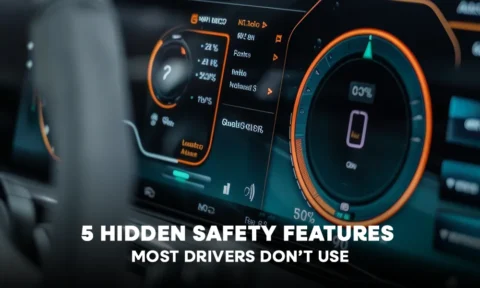Long highway drives can be thrilling, offering a sense of freedom and a change of scenery. But as the miles add up, fatigue can set in, diminishing your focus and putting your safety at risk. Whether you’re on a solo road trip or transporting loved ones, staying alert and maintaining safety should be your top priority. Here’s a practical and insightful guide to help you drive smart, stay sharp, and reach your destination safely.
Plan Ahead for a Smooth Journey
Preparation is the first step toward a safe highway drive. Ensure your vehicle is in good condition with a pre-drive inspection that includes tire pressure, fluid levels, lights, and brakes. Map out your route in advance, noting rest stops, gas stations, and potential overnight options if your journey is especially long. Packing healthy snacks, water, and emergency supplies will also help you avoid unnecessary stress on the road.
Sleep Well Before You Drive
Nothing replaces a good night’s sleep. Fatigue is one of the leading causes of highway accidents, and no amount of coffee can compensate for sleep deprivation. Aim for at least seven to eight hours of rest before a long trip. If you feel drowsy even before hitting the road, delay your departure—safety is more important than sticking to a schedule.
Use the Right Fuel—For You and Your Vehicle
Start your drive with a nutritious meal. Avoid heavy, greasy foods that can make you sluggish, and opt for balanced options that release energy gradually. Keep yourself hydrated with water instead of energy drinks or excessive caffeine, which can cause a crash in alertness later on. Just as your car needs the right fuel, so do you.
Take Regular Breaks to Recharge
Driving nonstop for hours can drain your concentration. Take a break every two hours or every 150 kilometers, even if you don’t feel tired. Stretch your legs, walk around, or grab a light snack. These short breaks not only rest your body but also refresh your mind, helping you refocus before getting back on the road.
Engage Your Senses and Mind
Keep your mind engaged to avoid zoning out on long, monotonous highways. Listen to music, podcasts, or audiobooks, but make sure the content is not too soothing or distracting. Roll down your windows occasionally for fresh air, adjust your seating posture, and stay aware of your surroundings at all times.
Share the Drive When Possible
If you’re traveling with a licensed companion, take turns driving. Sharing the responsibility not only reduces fatigue but also allows both drivers to rest properly. Even a 30-minute nap while someone else takes the wheel can make a big difference in your alertness levels.
Watch for Warning Signs of Fatigue
Yawning repeatedly, drifting from your lane, or missing traffic signs are strong indicators that your focus is slipping. Don’t ignore these warning signs. If you experience any of them, pull over at the next safe stop and rest. Continuing to drive when drowsy is as dangerous as driving under the influence.
Adjust Your Environment for Maximum Focus
Set your car’s interior temperature to a cool, comfortable level to stay awake. Avoid using cruise control for long stretches—it might make your brain go on autopilot too. Stay alert by keeping your eyes active, scanning the road, mirrors, and surroundings regularly.
Know When to Stop- Safety Comes First
If you ever feel too tired to continue, don’t push through. Find a safe place to rest or consider staying overnight. No schedule is worth risking your life. Prioritize your health, alertness, and the safety of everyone on the road.
Arrive Alive, Drive Smart
Long highway drives don’t have to be exhausting or risky. With the right planning, self-care, and attention to your mental and physical state, you can enjoy the journey as much as the destination. Remember, staying alert is not just about reaching on time—it’s about arriving alive.







